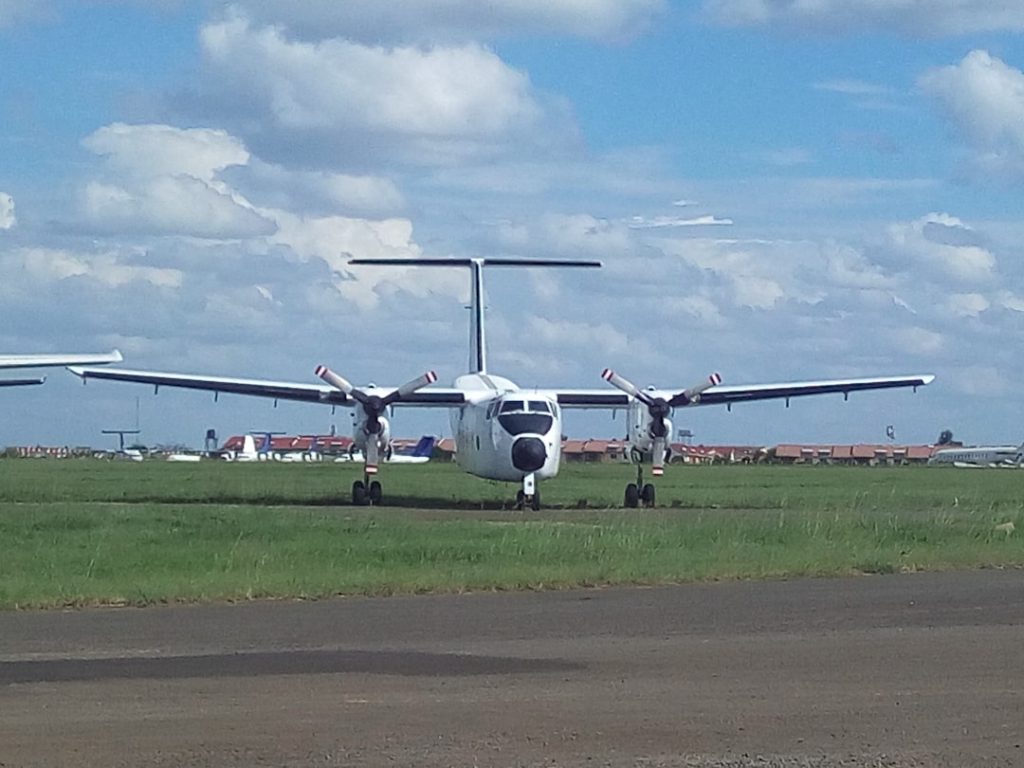The Antonov An-225 Mriya, a marvel of engineering and aviation, stands as the largest cargo aircraft ever constructed. Designed and built in the 1980s in the Soviet Union, this colossal airplane was originally intended to transport the Buran space shuttle, a project that paralleled the American Space Shuttle program. The An-225 is not just a means of transportation; it embodies the pinnacle of Soviet aerospace innovation and serves as a testament to human ingenuity in overcoming the challenges of heavy-lift air transport.
With its distinctive six-engine configuration and an impressive wingspan of 88.4 meters, the An-225 has captured the imagination of aviation enthusiasts and professionals alike. The aircraft’s name, “Mriya,” translates to “dream” in Ukrainian, reflecting the ambitious vision behind its creation. The An-225 is not merely a functional vehicle; it represents a significant chapter in the history of aviation, showcasing what is possible when technology and vision converge.
Its ability to carry oversized cargo has made it an invaluable asset in various sectors, from humanitarian aid to commercial freight. As we delve deeper into the history, design, and impact of the Antonov 225, we will uncover the layers of significance that this aircraft holds in both aviation and global logistics.
Key Takeaways
- The Antonov 225 is the world’s largest and heaviest cargo aircraft, designed for transporting oversized payloads and heavy machinery.
- The Antonov 225 was developed in the 1980s by the Soviet Union’s Antonov Design Bureau, primarily for carrying the Buran spaceplane and other large payloads.
- With a wingspan of 88.4 meters and a maximum takeoff weight of 640 tons, the Antonov 225 has the capacity to carry up to 250 tons of cargo.
- The Antonov 225 plays a crucial role in global cargo transportation, particularly for moving large and heavy items that cannot be accommodated by other aircraft.
- The Antonov 225 has set numerous records for cargo transportation, including carrying the heaviest single item and the longest piece of air cargo.
History and development of the Antonov 225
The inception of the Antonov An-225 can be traced back to the early 1980s when the Soviet Union sought to develop a transport aircraft capable of carrying the Buran space shuttle. The need for such an aircraft arose from the desire to transport large payloads over long distances, particularly for space missions. The design was spearheaded by Antonov Design Bureau, which had already established a reputation for creating innovative aircraft.
The first flight of the An-225 took place on December 21, 1988, marking a significant milestone in aviation history. Initially, only one prototype was built, which was used primarily for transporting the Buran shuttle. However, after the dissolution of the Soviet Union and the subsequent cancellation of the Buran program in 1993, the future of the An-225 was uncertain.
It remained largely inactive for several years until it was revived for commercial operations in 2001. This transition marked a new chapter for the aircraft, as it began to serve various industries by transporting oversized cargo that other aircraft could not accommodate. The An-225’s unique capabilities quickly established it as a leader in heavy-lift air transport.
Design and specifications of the Antonov 225

The design of the Antonov An-225 is characterized by its massive dimensions and innovative engineering solutions. With a length of 84 meters and a wingspan that exceeds that of any other operational aircraft, it is a sight to behold. The An-225 is powered by six Ivchenko Progress D-18T turbofan engines, each capable of producing over 51,000 pounds of thrust.
This powerful engine configuration allows the aircraft to take off with payloads exceeding 250 tons, making it unparalleled in its class. The cargo hold of the An-225 is equally impressive, measuring 43 meters long, 6.4 meters wide, and 4.4 meters high. This spacious interior can accommodate oversized items such as industrial equipment, humanitarian supplies, and even entire rail cars.
The aircraft features a unique nose that can be raised to facilitate loading and unloading, allowing for easy access to its cavernous hold. Additionally, its landing gear consists of 32 wheels, providing stability and support when carrying heavy loads. The combination of these design elements not only enhances its operational capabilities but also ensures safety during takeoff and landing.
The Antonov 225’s role in global cargo transportation
| Aspect | Details |
|---|---|
| Maximum Payload | 250,000 kg (550,000 lb) |
| Length | 84 m (275 ft 7 in) |
| Wingspan | 88.4 m (290 ft 0 in) |
| Role | Global cargo transportation |
| Range | 15,400 km (9,600 mi) |
| First Flight | 21 December 1988 |
The Antonov An-225 has carved out a niche for itself in global cargo transportation by providing solutions for industries that require heavy-lift capabilities. Its ability to transport oversized cargo has made it an essential asset for sectors such as construction, energy, and humanitarian aid. For instance, when natural disasters strike, organizations often rely on the An-225 to deliver critical supplies quickly and efficiently.
Its capacity to carry large quantities of food, medical supplies, and equipment can make a significant difference in disaster relief efforts. In addition to humanitarian missions, the An-225 has been utilized for commercial purposes by various industries. Companies involved in oil and gas exploration often require transportation for large drilling equipment that cannot be moved by conventional means.
The An-225 has successfully transported massive turbines for power plants and even entire sections of wind turbines across continents. Its versatility allows it to adapt to different cargo requirements, making it a preferred choice for businesses that need reliable heavy-lift solutions.
Notable achievements and record-breaking flights of the Antonov 225
Throughout its operational history, the Antonov An-225 has achieved numerous milestones that underscore its capabilities as a heavy-lift aircraft. One of its most notable achievements occurred in 2004 when it set a world record by carrying a payload of 253.8 tons from Ukraine to Australia. This flight not only demonstrated its extraordinary lifting capacity but also showcased its ability to operate over long distances with heavy loads.
Another remarkable feat took place in 2010 when the An-225 transported a generator weighing over 187 tons from Italy to Armenia. This mission highlighted not only the aircraft’s capacity but also its reliability in executing complex logistics operations across international borders. The An-225 has also been involved in transporting unique items such as an entire train locomotive and large sections of aircraft fuselages, further solidifying its reputation as an unparalleled heavy-lift solution.
The Antonov 225’s impact on the aviation industry

The Antonov An-225 has had a profound impact on the aviation industry by pushing the boundaries of what is possible in air transport. Its unique design and capabilities have inspired advancements in cargo aircraft development worldwide. Other manufacturers have taken note of its success and have sought to create their own heavy-lift solutions, leading to increased competition in this specialized market segment.
Moreover, the An-225 has played a crucial role in shaping logistics strategies for companies around the globe. Its ability to transport oversized cargo has led to more efficient supply chain management practices, allowing businesses to optimize their operations by utilizing air transport for items that would otherwise require lengthy ground transportation routes. The aircraft’s presence has also encouraged investment in infrastructure at airports capable of accommodating such large aircraft, further enhancing global logistics networks.
Future of the Antonov 225 and potential developments
As of October 2023, the future of the Antonov An-225 remains uncertain following significant damage sustained during the conflict in Ukraine. However, there are ongoing discussions about potential restoration efforts that could see this iconic aircraft return to service. Given its unique capabilities and historical significance, many aviation enthusiasts and industry experts advocate for its revival as a vital asset in global air transport.
In addition to restoration efforts, there is potential for technological advancements that could enhance the An-225’s performance if it were to be rebuilt or modernized. Innovations in materials science could lead to lighter yet stronger components, improving fuel efficiency and payload capacity. Furthermore, advancements in avionics could enhance navigation and safety systems, ensuring that the An-225 remains at the forefront of heavy-lift aviation.
Conclusion and final thoughts on the Antonov 225
The Antonov An-225 Mriya is more than just an aircraft; it is a symbol of human achievement in engineering and innovation. Its remarkable history reflects not only technological prowess but also resilience in adapting to changing circumstances within the aviation industry. As we look toward the future, there is hope that this extraordinary aircraft will once again take to the skies, continuing its legacy as a leader in heavy-lift air transport.
The impact of the An-225 extends beyond its physical capabilities; it has inspired generations of engineers and aviation enthusiasts while shaping logistics practices worldwide. Whether through humanitarian missions or commercial endeavors, its contributions have been invaluable. As discussions about its future continue, one thing remains clear: the Antonov An-225 Mriya will forever hold a special place in aviation history as an unparalleled giant of the skies.


